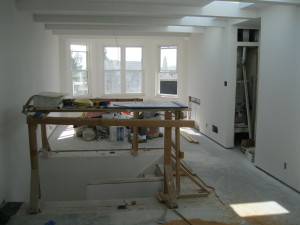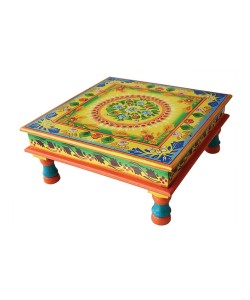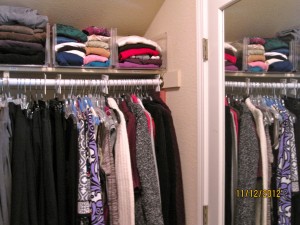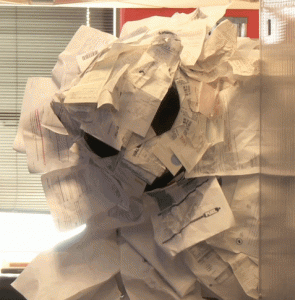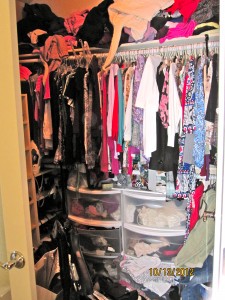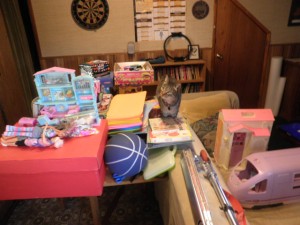So you’ve finally decided to take the plunge. You’re going to do a remodel.
Before you pick up the phone to call your designer/contractor/architect, take a look around. What do you see?
Chances are you’re not seeing what your contractors will want to see the day they get started – an empty space.
More likely you’re looking at stuff – the good, the bad and the ugly: Furniture, household goods, artwork, paper, personal items and in all likelihood some amount of indistinguishable clutter on your floor and other surfaces.
It doesn’t matter if you are remodeling your whole house or just one room, before the first nail is in, you’ll need to think about how to organize and empty the room of all its contents. This is especially true if your remodel includes a new floor.
Before you pull the plug on the whole idea, consider this the first phase of your remodel. I call it the Pre-model – as in plan and prepare for the remodel.
Essentially, the Pre-model involves organizing, de-cluttering and emptying the project space before the remodel begins. It’s as necessary to the process as getting the right permits. Build this into your timeline and your project will start on time.
Delay or avoid the Pre-model and your project will come to a screeching halt before it has even started.
There are two ways to approach the Pre-model: The smart way and the hard way.
Here’s what the hard way looks like:
Your contractors are due to begin demolition tomorrow. You wake up at the crack of dawn and dump everything you own, wanted and unwanted, into boxes before stuffing them haphazardly into another area of your home – that is, if you’re lucky enough to have room. Otherwise you take it to an expensive self storage unit that is twice the size of what you need because that’s all they had available – and promise yourself you will deal with it later.
If you choose this method, don’t be surprised when you finally go to move all the stuff out of storage and you hear yourself say more than once, “I can’t believe I actually kept this!” (And paid all that money to store it!).
The smart way, on the other hand, looks more like this:
You are comfortably moved into a new, temporary home or area of your house and getting back to your routine. Your contractors congratulate you for making it possible for them to start on time and everyone is eager and excited to get started.
The smart way involves taking time to plan and prepare for your Pre-model. If you do it yourself, this is what the Pre-model requires:
- PLAN
Determine if there are any items you will need access to during the remodel. This is particularly important in a kitchen remodel where you may be without a functioning kitchen for several months. Consider setting up a “temporary kitchen” in a less used area or room of your home with basic kitchen appliances such as a microwave, mini fridge, electric water kettle, plates, utensils, etc. - DECIDE
Determine what household items you want to keep. Skipping this step will cost you in the long run so make it a priority to sort and organize these items by category. - PREPARE
Just as your contractor would, make sure you have the right “tools” for your Pre-model. Use large plastic bags for trash and for items you want to donate; paper bags for recycling; packing boxes or bins and other moving supplies for things you want to keep; and, a 4’-6’ table or surface for working. - PURGE
Make arrangements to sell or donate furniture items you no longer want. Take pictures of these items and email them to your preferred consignment store or charity. These services will review the items and decide whether or not they are interested in them. - PACK
Pack what you’ve decided to keep in boxes, labeled by category. This will make the process of unpacking that much easier when your remodel is done. Pack heavy items like books in small boxes; fragile items like dish-ware, lamps and crystal in double weight “dish-packs” and small appliances and lighter items like linens and lamp shades in larger boxes. - STORE
If you are lucky to have extra space in a garage or spare room to store the household items you retain, consider hiring a moving company that specializes in small moves to help you move those items for you. - MOVE
If you are planning to remodel your entire home, it’s likely you will need to relocate for a period of months. Consider consulting with a professional organizer/move manager to help you plan for this type of temporary move. They can also recommend reputable moving and storage companies in your area as well as execute your Pre-model and get you unpacked and organized when it’s done.
Doing the Pre-model is what allows your remodel to happen. By following these simple steps, you’ll experience far less stress during your remodel and discover how quickly you can live in and enjoy your new kitchen, bath, bedroom or newly remodeled home, when it’s done.
